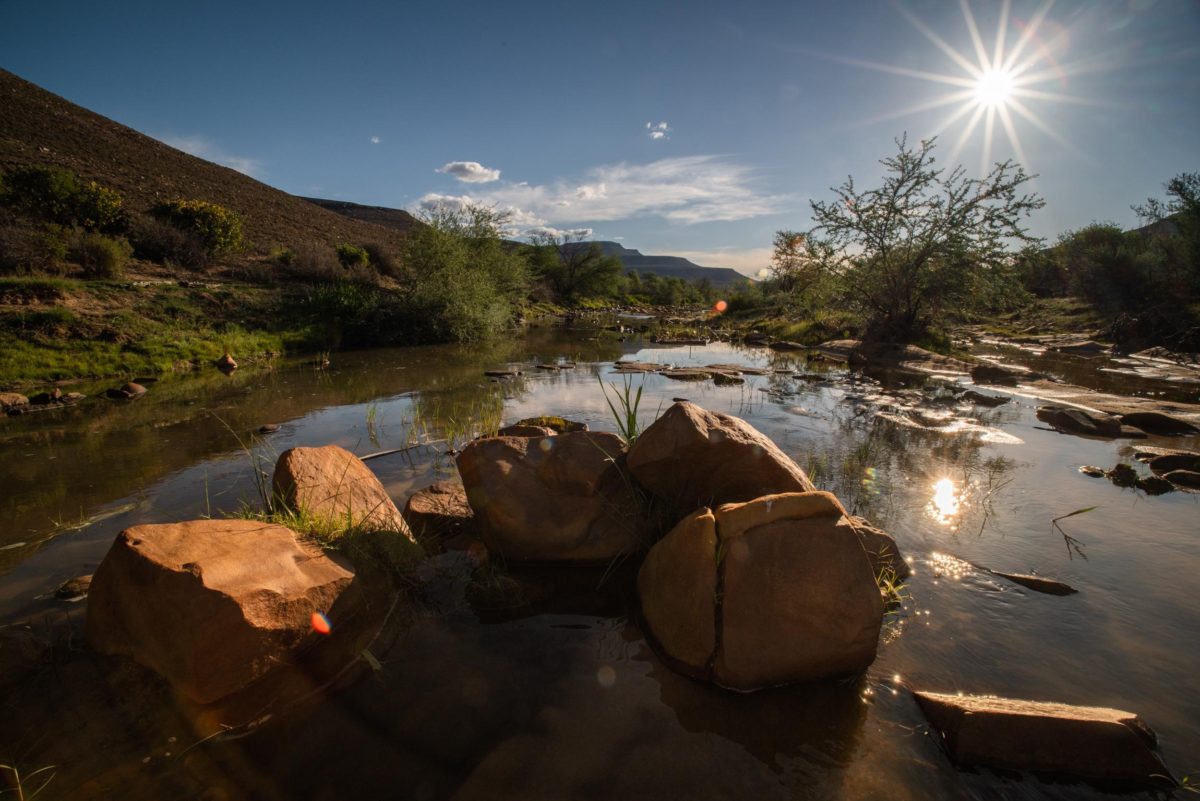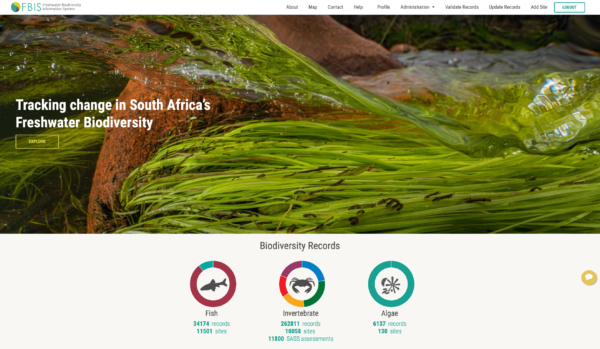
South Africa’s unique freshwater biodiversity is under building pressure from climate change, over-exploitation, and invasive species. River health is deteriorating faster than it can be measured, and human impacts continue to severely compromise biodiversity. This can have serious adverse consequences for ecosystem services, such as the provision of food and safe, clean drinking water. Until now there has been no informative and accessible database for hosting and serving South Africa’s river biodiversity data, impeding assessments of historic and current river conditions. Such information is critical to establish baselines, patterns of change and inform strategic freshwater management and decision-making.
The Freshwater Research Centre (FRC) has developed a powerful, visual, data-rich information system for South African rivers. Each release of the Freshwater Biodiversity information System (FBIS) has enhanced functionality, biodiversity modules, spatial layers and filters, dashboards and reporting. FBIS maximizes data visualization enabling users to search and extract data, add data, and easily generate reports. FBIS harvests data from GBIF and links to IUCN for species threat status, as well as hydrological and citizen science platforms. FBIS is designed using open source software. The system design was strongly informed by the data and reporting needs of the end-users as it aims to be best system possible for serving South African freshwater biodiversity data.
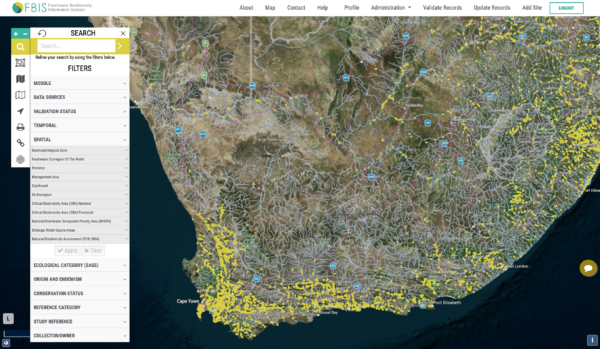
FBIS v3 release
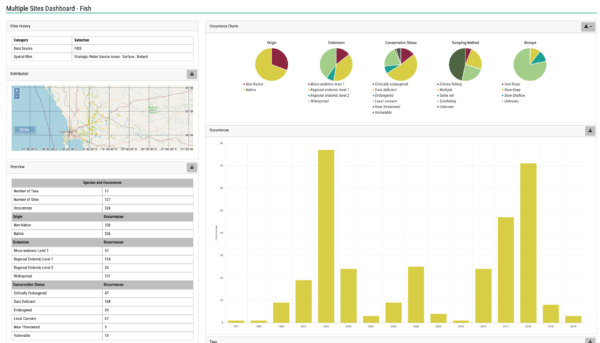
FBIS Version 3 was released in June 2020 (freshwaterbiodiversity.org). The FBIS serves as a community platform for inventory and maintenance of freshwater biodiversity data with an end goal to assist the evaluation of long-term change in river biodiversity and ecosystem condition in South Africa.
This three-year project, funded by the JRS Biodiversity Foundation and SANBI, and implemented by the FRC and Kartoza, has made good progress since the release of the second version in July 2019. Highlights of the latest version include (1) new functionality of dashboards and map interface (2) additional data modules and a substantial increase in data quantity and quality, (3) an improved set of spatial layers and filters for querying the data and (4) the inclusion of complementary third party data sets.
The data
FBIS mobilizes in excess of 300,000 biodiversity records for South African rivers. FBIS currently serves 33,642 fish records, 264,362 invertebrate records and 6,137 algal records. The system serves data on taxon occurrences and abundances, as well as on derived indices like river ecosystem health, or threat and endemism, and associated abiotic data, frequently used in management and conservation plans. FBIS includes two legacy South African databases which were previously inaccessible to the freshwater community. FBIS includes 6 base layers (terrain, topography, aerial photograph, satellite hybrid, plain B & W, plain greyscale) and in excess of 40 spatial layers (available to both contextualize and filter the biodiversity data). It includes 100,000 abiotic data records associated with the biodiversity data.
FBIS applications
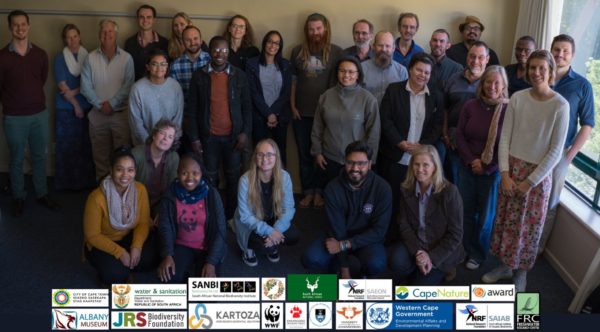
Two other JRS-supported projects are already expanding or modifying FBIS to meet freshwater biodiversity information needs in other areas. The Association for Water and Rural Development is expanding FBIS for the Cape Floristic Region in South Africa to include freshwater biodiversity data for catchments flowing through Kruger National Park, and developing a decision-support interface that can integrate with FBIS. The Center of Excellence in Biodiversity and Natural Resource Management (CoEB), hosted at the University of Rwanda, is also developing their own Rwandan Freshwater Biodiversity Information System (RBIS), a modified version of FBIS that is tailored to the needs of Rwandan stakeholders. In addition, JRS will fund a 3-day workshop hosted by FRC for leaders of projects developing African freshwater biodiversity information systems. This biodiversity informatics workshop will bring together JRS freshwater grantees and leaders of similar efforts to share experiences and facilitate future sharing and collaboration.

